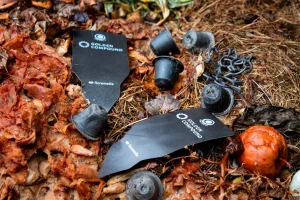Above all, barrier values are a decisive criterion in the world of coffee capsules. They determine how well a capsule protects the aroma and quality of the coffee. Certifications and scientific tests form the basis for objective comparisons. But why do we have to keep arguing when our numbers speak for themselves? Why are bioplastics equated with aluminum when sustainability is completely ignored? Today, we will use a test to show how drastic the differences really are – and why the market urgently needs a rethink.
The decisive test: Our capsule vs. the competition
We conducted a test: One of our HOMEcap barrier capsules against a capsule from a well-known competitor. Both capsules should, according to common market expectations, have a high oxygen barrier – because nothing is worse than oxygen penetrating the capsule, causing the coffee to lose flavor and freshness. The results are alarming:
- HOMEcap barrier: 0.5% oxygen content
- Competitor’s capsule: 20.3% oxygen content
To put this into perspective: The air we breathe contains 20.8% oxygen. This means that the competitor's capsule offers practically no barrier against oxygen – it provides almost no protection for the coffee. So how is it that we still have to discuss whether our capsule is a real alternative? How can a product with such poor values even exist on the market?
Why the comparison between bioplastic and aluminum is flawed
A common argument against bioplastics in the coffee capsule industry is: "Aluminum has the best barrier properties." That may be technically true – but only if sustainability is removed from the equation. Aluminum requires an enormous amount of energy to produce, causes massive environmental damage through bauxite mining, and is not a sustainable material without a perfect recycling infrastructure.
Our HOMEcap barrier capsules, on the other hand, rely on a sustainable biocomposite with outstanding barrier properties. They are not only biodegradable but also designed to optimally protect the coffee’s aroma. The comparison with aluminum is therefore not only unfair but also misleading – because it completely ignores the sustainability factor.
Why do we still need to argue?
We have the certifications, we have the tests, we have the values that prove our capsule is top-class in terms of oxygen barrier. And yet, we constantly have to measure ourselves against questionable alternatives that offer practically no protection. It’s time for companies, roasters, and capsule manufacturers to ask themselves:
- Is the quality of my coffee really important to me?
- Do I want to impress my customers with a sustainable, high-quality solution?
- Am I willing to challenge the status quo and promote innovation?
A wake-up call for the industry
The test shows: Not every capsule delivers what it promises. Our HOMEcap barrier capsule sets new standards and proves that sustainability and quality do not require compromises. Companies that continue to rely on solutions with poor barriers risk not only the freshness of their product but also their credibility. It’s time for the market to wake up and recognize real innovation.
The numbers speak for themselves. Are you ready to take the next step?



